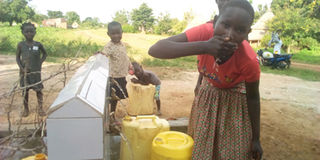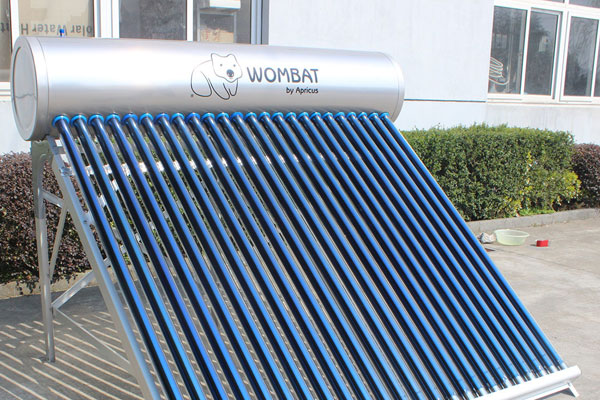Prime
Kumi locals get solar-powered water facility

Resident take water from the solar-powered water project in Kadami Sub-county, Kumi District. photo/George Muron
What you need to know:
The residents have for decades been drinking unclean water from Lake Nyaguo, a tributary of Lake Kyoga
More than 3,000 residents in Kaderin Parish, Kadami Sub-county, Kumi District are excited after they received a solar-powered water project.
The residents have for decades been drinking unclean water from Lake Nyaguo, a tributary of Lake Kyoga.
Ms Roda Okurut Achom, one of the residents in Kaderin, said they have been fetching contaminated water for domestic use, especially drinking, cooking, bathing and washing utensils, which posed a health risk.
“In the lake and swamp there are so many bacteria that cause diseases, even the fishermen defecate and urinate around the same water source, animals that die rot in water,” Ms Achom said.
The Shs99m project was installed by Habitat for Humanity Uganda, a non-government organisation, that constructs houses and empowers the vulnerable and needy communities to do sustainable livelihood activities.
Mr Ben Oboi, the chairperson of Oput Village, said the water would improve their personal hygiene and sanitation.
Mr Oboi encouraged the residents to construct pit-latrines and embrace washing of hands.
“The responsibility now is in our hands, let us dig pit-latrines, buy soap and keep ourselves clean. When you visit the pit-latrine please wash your hands after the natural call, wash clothes and bathe with soap to avoid [body odour],” Mr Oboi said.
Mr Amos Okiror, the chairperson of Kaderin Parish, said the project would reduce cases of domestic violence, where men accuse women of wasting time at the swamp.
Mr Michael Ochan, the programme officer of Habitat for Humanity, said they thought of supporting the Kaderin community because they are the less privileged.
He said their focus was to build permanent houses but were touched by the dire need for safe water prompting them to design another separate proposal for the safe water source.
He said they also installed water tanks in the 55 homesteads, where they built permanent houses and a two-stance pit latrine for each of those houses.
“We worked hand-in-hand with the district to identify our beneficiaries and during our assessment we realised that the community was drinking dirty water from the swamp, we did our assessment and we noticed that the condition of water was bad,” Mr Ochan said.




